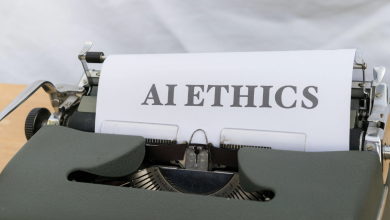Artificial intelligence is based on fundamental principles like safety, ethics, responsibility, trust, and acceptance. It also needs to consider fairness, transparency, accountability, privacy, security and benefit socially. The goal of AI is to minimize and prevent risks in the decision-making and execution of the recommendations given by the system. It needs to abide by the compliances, regulations, and policies in the system or organization.
Introduction
The latest AI focus is to come with blueprints that have best practices focusing on ethics, policies, and regulations. The goal is to balance the payoffs and the risk in adopting cutting-edge technologies. There are risks that need to be managed which are related to mistakes, issues, errors, bias, discrimination, opaqueness, lacking interpretation, and instability. The focus is to bring down biases, discriminations, and prejudices.
There are other risks that need to be overcome while using AI. Those are related to adversarial attacks, Privacy issues, Cyber security-related, and open-source software vulnerabilities. There are risks due to no human intervention, rogue Artificial intelligence, and no accountability. Job displacement, inequality issues, and power concentration cause problems for the usage of artificial intelligence. There are issues related to miscommunication, intelligence divide, surveillance, and warfare.
Enterprise Risk Management
Enterprise risk management solutions help in identifying and monitoring risks related to intellectual property, finance, reputation, legalities, compliance, policies, values, and data security. AI solutions might cause problems which making decisions in an automated system compromising ethics and values. AI solutions need to be more responsible and while designing need to take care of the risks and keep in mind ethics, principles, values, compliance, and policies. An enterprise governance framework is needed to take accountability and responsibility in creating and designing AI solutions. These solutions need to be designed for traceability, monitoring, manageability, and lines of defense.
During the inception phase of the AI project lifecycle, assessments need to be done to identify issues and gaps in the processes and models. You need to have a focus on the goal while designing and developing the new models. In the testing phase, models and processes need to be validated. The change management board needs to be governed to take care of the change, ethics, policies, and values. Enterprises get assessed for AI readiness before actual implementation and production deployment.
The controls framework needs to be designed and internal stakeholders need to be trained. IT needs to focus on security and create a threat protection shield against possible threats generated because of AI solutions. Internal Audits need to be done and security assessments should be conducted before the rollout of AI solutions.
The other important area to focus on before deployment is to ensure the AI solutions are being fair and the privacy of the customers, employees and other key human resources is protected. Legalities and regulations need to be checked if AI solutions are abiding by them. It is no brainer these days that AI automation helps in improving efficiencies and productivity. The areas which are challenging are security, decision making process, and information security. A responsible AI framework needs to be created and a board needs to be created. This board will be accountable for AI systems decision-making.
AI/ML Solutions – Responsible AI
Artificial intelligence-based solutions typically have machine learning models which are used for decision making. Robotic process automation solutions are used for business process automation. In the fintech space, AI solutions are used for fraud detection. In insurance, claims fraud detection is an important area where AI is used. Explainable AI and Responsible AI come into play in these kinds of use cases where enterprises like to know what AI is doing vs a black box giving recommendations. AI systems need to provide explanations for the predictions, recommendations, and decisions. It needs to be responsible by using the policies, regulations, compliances, and rights to check if the decisions are right.
Creating the right set of data for AI solutions to work is another challenge even when you have explainable and responsible AI frameworks in place. Training, testing, and validation data sets need to be created for training the AI/ML models. These data sets need to have the policies, regulations, compliances and rights included. Then AI solutions can really be accountable, fair, and provide security recommendations.
AI solutions need to be accountable in explaining to a rejected customer for a loan. The solutions need to be provided the next steps to fix the customer problems to get a loan. The customer needs to understand the next steps to get his loan and the person needs to be satisfied with the AI decisions.
Bias or unfairness needs to be detected in the decision-making during training and testing. There might be unseen scenarios that are resolved manually. There needs to be a loop for feedback to the model to update the training, testing, and validation models. Data sensitivity and privacy is key issue in the area of health care and insurance to be used by the AI models.
What’s Next?
Last but not least, let us look at the interesting quote from Google’s CEO.
“There is no question in my mind that artificial intelligence needs to be regulated. The question is how best to approach this,” — Sundar Pichai (Google CEO)
It is very clear that bigger technology product companies are focusing on AI, regulations, and compliance. Future will be better with Responsible AI and Explainable AI playing together with the AI/ML solutions.



